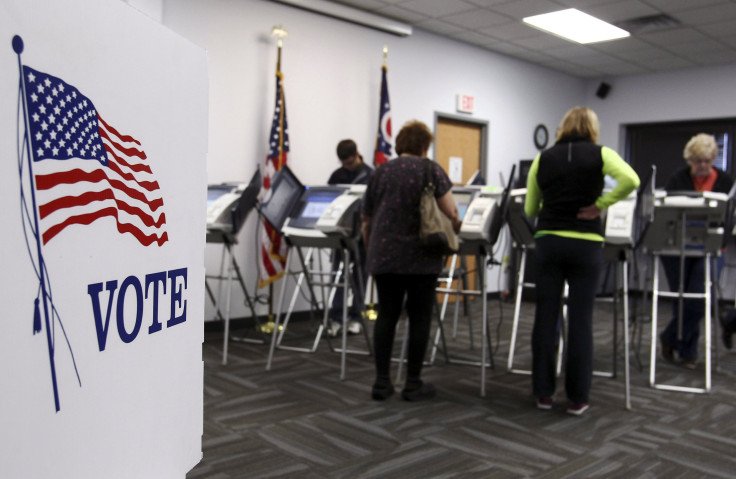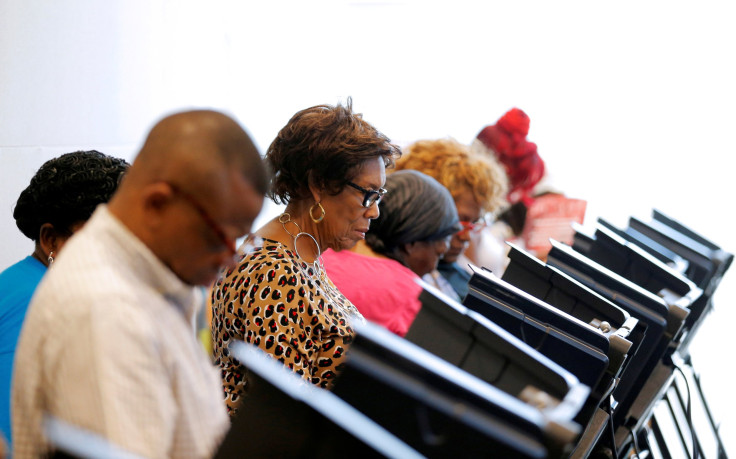Do I Need An ID To Vote? Voter Suppression Laws Hurt Minorities, Don't Curb Fraud

Early voting closes in North Carolina Saturday and black voter turnout is poor, which may hurt Democratic presidential candidate Hillary Clinton’s chances in the important swing state. Black early voter turnout dropped by 16 percent this election season, while white voter turnout is up by 15 percent in the state.
This dip in the number of black voters turning up for early voting could be a result of North Carolina’s restrictive voting laws. The state’s National Association for the Advancement of Colored People (NAACP) said in October it is planning on taking legal action against the North Carolina Board of Elections over voter suppression.
“Voting fraud is a distraction: statistically and legally nonexistent,” NAACP President William Barber II reportedly said. “It is in fact voter suppression that is the real threat in this election.”
Voter suppression first emerged in 2010 when politicians all over the country began introducing restrictive voting laws, which served as obstacles to registration, cut short early voting and promoted strict voter identification requirements.
These laws, when they first came into place, allowed registration only if the person had one of a few accepted photo IDs. The law deliberately excluded IDs that were easily available to young people and people with low-income like college IDs or IDs issued by public and private employers. The main reason these laws were put in place was to avoid voter fraud.

However, Republicans went on record saying that the laws were created to intentionally suppress voting among minorities, the young, the poor, people with disabilities and other groups that usually tend to vote Democrat. Voter fraud is virtually nonexistent in the U.S. and these restrictive laws are likely to affect the 2016 election.
In 2012, only four states required a voter to show a valid photo ID to vote. That number has now risen to 32, the New York Times reported.
“There has been movement toward more voter ID laws, and toward stricter voter ID laws,” Wendy Underhill, program director for elections and redistricting at the National Conference of State Legislatures, told the Times. “Court challenges have gone in both directions. They haven’t all been either to undo voter ID or to support it.”
While most of these states require a valid voter ID, some will allow returning voters to cast their ballots even if they don’t have one. Some, on the other hand, allow only photo IDs that aren’t readily available to everyone.
Activists fighting against these restrictions have, however, seen some victories in court but those wins have not translated to reality just yet. Courts did not strike down the restrictions nor did they nullify it. They instead settled for an alternative to voter IDs.
According to the Brennan Center for Justice, 14 states will implement their voter ID laws this 2016 election. The states listed are: Alabama, Arizona, Indiana, Kansas, Mississippi, Nebraska, New Hampshire, Ohio, Rhode Island, South Carolina, Tennessee, Texas, Virginia, and Wisconsin.
The Pew Research Center published a report last month that found that most American voters had no idea about their state’s voter ID requirements. According to the report, four in ten Americans residing in states that do not require voter IDs believe they will be asked for voter ID when they go to cast their ballot.
On the other hand, one in five people living in states that require voter IDs do not know a valid ID is required for them to vote.
© Copyright IBTimes 2024. All rights reserved.






















